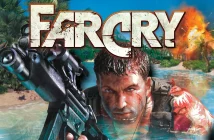Level 5’s Japanese RPG Ni No Kuni could easily be dismissed as a children’s game. Studio Ghibli produced, it retains all the childlike charm that is the cornerstone of the film studio, with an emphasis on colour, surreal characters and of course the young protagonist who embarks on an important journey. But here, as well as a truly mature storyline, lies a depth of detail, including an expansive created world, 400+ fightable creatures and over 100 side quests. Hand drawn cut scenes may be very few and far between but are a beautiful reminder of the studio’s input. A charming soundtrack is provided by the Tokyo Philharmonic Orchestra.
Our hero is Oliver, who lives in a charmingly Japanese idea of a 1950’s American town, ‘Motorville’. After a tragic accident, he finds himself transported to another world (Ni No Kuni literally translates into English as ‘a second country’) by his now sidekick ‘Drippy’ to do what he can to recover his old life. Drippy is a truly ‘love him or hate him’ character; supposedly a fairy, he looks like a Moomin/aardvark hybrid and speaks with a particularly strong Welsh accent. And Drippy is merely an introduction to the incredible imagination of the game developers.
In some ways the game channels other JRPGs; get ready to feel nostalgic. As in the Final Fantasy series, an unlikely hero travels the world accruing a group of loyal friends to defeat a world-threatening evil. Like Pokemon, fighting is predominantly taken on by an array of creatures captured in the game world, all with certain habitats and individual moves, strengths and weaknesses. You then level these up, and they infrequently engage in metamorphosis. However this is not turn-based, and – thank god – creatures visibly roam the map and can be avoided, thus dispelling the frustration of random battles. As you level up, creatures of lower levels will run away from you, creating seamless game play which avoids unnecessary fighting which is found in games like Pokemon. The learning curve is appropriate; creatures in the new areas may seem impossible to beat at first but victory soon becomes achievable. This acquires your characters money which can be exchanged for new weapons or items which can in turn be combined with other items collected in the world to make better weapons or new objects through the hugely expansive ‘alchemy’ system.
But where Ni No Kuni triu mphs over these games is in its truly imaginative settings and situations. A quaint town is of course populated half by humans and half by cats. A haunted castle twists the screen upside down, causing much confusion. An ancient civilisation has an entire alphabet, and you need to do some deciphering. And there is an impressive selection of bosses to defeat along the way, always integrated properly into the storyline, and usually challenging. Not to mention the plethora of puns which name basically everything in the game – I particularly enjoy the fact that someone had to laboriously re-write puns in English for every single creature (a sun shaped creature morphs from a ‘Grandsun’ to a ‘Great-Grandsun’, for example; the evil version is the ‘Wayward Sun’). I found these quirky and charming; some may not.
mphs over these games is in its truly imaginative settings and situations. A quaint town is of course populated half by humans and half by cats. A haunted castle twists the screen upside down, causing much confusion. An ancient civilisation has an entire alphabet, and you need to do some deciphering. And there is an impressive selection of bosses to defeat along the way, always integrated properly into the storyline, and usually challenging. Not to mention the plethora of puns which name basically everything in the game – I particularly enjoy the fact that someone had to laboriously re-write puns in English for every single creature (a sun shaped creature morphs from a ‘Grandsun’ to a ‘Great-Grandsun’, for example; the evil version is the ‘Wayward Sun’). I found these quirky and charming; some may not.
Some, however, may find the game over-complicated and in some places indulgent. The dialogue, in particular, could do with a more brutal cut in places. This often means the game ‘holds your hand’ by spelling out your tasks which could have relied on gamer initiative. The AI of your companions can also be frustrating, with one character in particularly seemingly completely unable to defend herself in any way. It’s very story-heavy, and you’ll need to invest time in the game; the story is around 40 hours with extensive extra material unlocked afterwards, meaning to complete the game you’re looking at spending 80 hours on it (I could have done without the clock on the pause menu telling me just how many hours I’d wasted). Of course, this is also indicative of great value for money and a truly immersive level of detail.
Ni No Kuni is one of the most creative games I’ve played in quite a while. It’s refreshing to see a game driven by artistic merit in a sea of first-person shooters. With 80 hours of game play and a noticeable lack of premium content, here is a game which prides itself on the experience given to the player, and doesn’t try to milk every last penny out of them.



